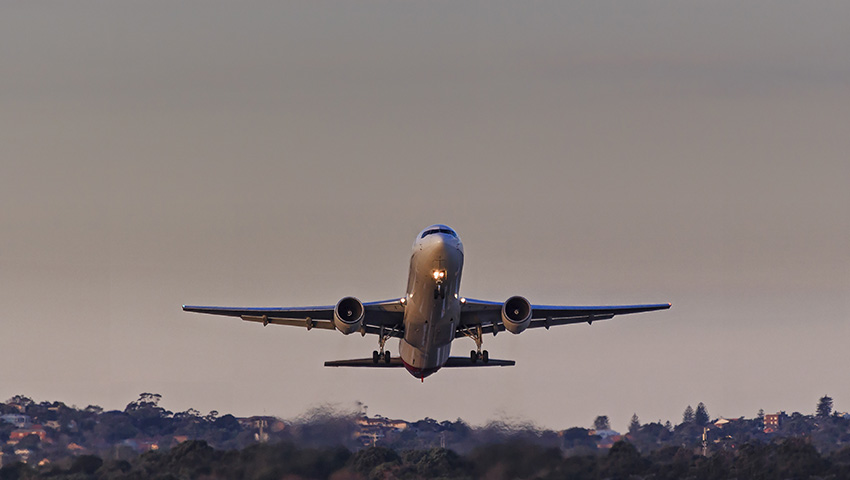Following revelations that a civilian airliner departing Tehran was accidentally shot down by an Iranian surface-to-air missile killing a number of international civilians – and recent examples over Ukraine – just how easy is it to bring down a civilian airliner?
To continue reading the rest of this article, please log in.
Create free account to get unlimited news articles and more!
Unfortunately it’s all too easy to shoot down a civil airliner using a surface-to-air missile, as appears to have happened over Iran this week with the loss of a Ukrainian International Airlines aircraft with all 176 passengers and crew.
Iran has denied it was responsible but US intelligence sources quoted by US media said a satellite detected the infrared flares of a pair of missile launches, followed by another blip of an explosion.
Other US intelligence sources attribute that to the Russian-made Tor missile, a widely used air defence system of which Iran is a known user.
Against such a missile, a lightly constructed civil airliner flying straight and level has virtually nil prospects of survival.
Two hundred and ninety-nine died in the shootdown of Malaysian Airlines Flight 17 over eastern Ukraine in July 2014, while 290 died on Iran Air Flight 655, destroyed by a SM-2 missile fired by USS Vincennes in the Persian Gulf in July 1988.
There have been numerous other incidents.
However, there appear to be some common characteristics – airliners flying on regular routes at times of heightened tensions in the overflown nation, with the authority to launch devolved down to the actual missile operators rather than higher authority.
In the latest tragedy in Iran, the shootdown occurred four hours after Iran launched rocket attacks on two bases in Iraq used by US forces. Iranian forces would understandably be on heightened alert for US retaliation.
Ukrainian flight 752, a Boeing 737-800 had taken off from Tehran international airport at 6.12am local time on a regular passenger flight to Kiev.
The final data from the aircraft’s onboard ADS-B transponder came three minutes later as the aircraft was still climbing. There was no distress call, indicating sudden and catastrophic failure.
Some 130 of the dead were Canadians, many of dual nationality of Iranian origin, returning to Canada by way of Kiev because sanctions on Iran bar more direct flights.
This was not one of the problematic Boeing 737 Max aircraft and it was near new, delivered to the airline in July 2016. The captain had more than 10,000 hours on 737 aircraft.
So far Iran hasn’t been helpful. The government denied it was responsible and blamed technical problems with the aircraft. It has rejected a request from Boeing to hand over the aircraft’s flight data recorder.
However Iran will surely face growing pressure. Canada for one has demanded an inquiry. Canadian Prime Minister Justin Trudeau said the shootdown was likely unintentional, which seems plausible.
The key question is how did the missile operators not know they were shooting at a civil airliner.
That same question was asked following the MH17 shootdown, blamed on a Russian SAM system operated either by Russians or pro-Russian Ukrainians.
Civil aircraft loudly broadcast their identity and location using various transponder systems, such as the current standard ADS-B. Military aircraft don’t broadcast their identify and location for obvious reasons, but their IFF systems will respond to an appropriate interrogation.
Whether Russian SAM systems can detect civil aircraft transponder emissions or not, a trained operator should still have been able to identify Ukrainian 752 as an airliner. After all it had just taken off from Tehran international airport and was heading away from the capital.
The best analysis of how this type of tragedy can occur relates to the US shootdown of Iran 655, an Airbus A300 flying from Tehran to Dubai via Bandar Abas. The aircraft was on a regular airline route across the Persian Gulf and squawking its identification.
This was a time of high tension between the US and Iran and USS Vincennes, equipped with the then-new Aegis combat system, was on heightened alert and inside Iran territorial waters in a running fight with Iranian gunboats.
Vincennes misidentified 655 as an Iranian F-14 on an attack run, though the radar clearly showed it was climbing not descending.
Ten attempts were made to contact the aircraft, seven on military frequencies that it couldn’t receive, and three on civil frequencies, which the 655 crew may have believed were directed at a different aircraft. They didn’t respond.
At that time, Vincennes and other US warships possessed no capability to monitor civil aircraft radio frequencies or reliable means to identify civil airliner routes. They do now.
A year earlier, the frigate USS Stark was hit by two Exocet missiles from an Iraqi fighter with 37 crewmen killed. Stark’s captain was relieved of his duty for failing to adequately defend his ship.
In the official inquiry into the downing of 655, much was made of the mindset of those on the Vincennes bridge, their aggressive commander, and a psychological condition known as scenario fulfillment in which the 18 bridge members ignored any information that contradicted their particular scenario of an Iranian attack.

 Login
Login







